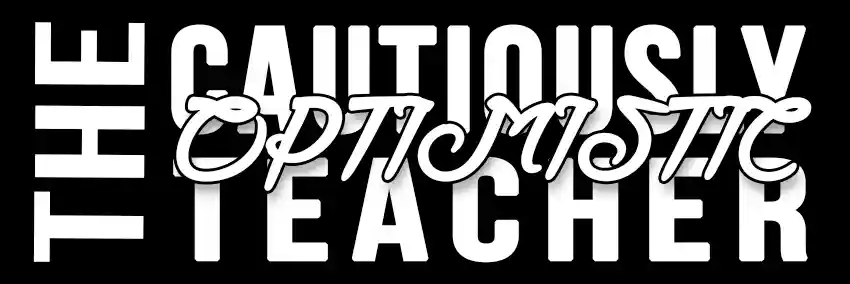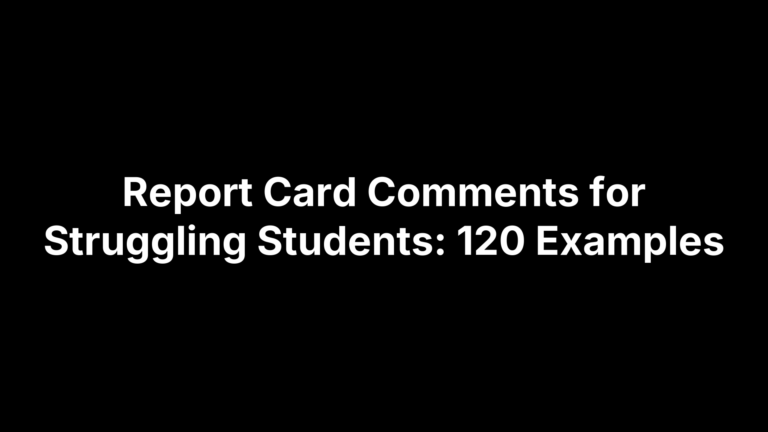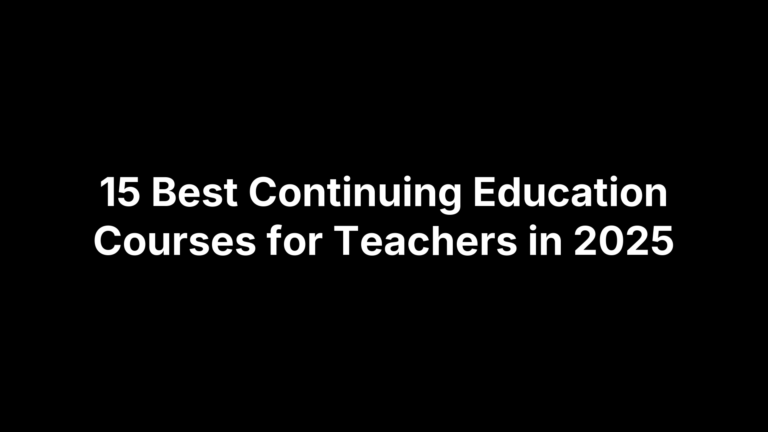Teacher Resume Tips: 6 Proven Ways to Stand Out in 2025
You know your teaching moves the needle, but your resume has to prove it in seconds. With applicant tracking systems scanning for keywords and principals skimming the top half, callbacks hinge on clarity, evidence, and relevance. That’s hard whether you’re a veteran with pages of experience or a student teacher turning practicum wins into impact. The task: spotlight licensure, edtech fluency, and student results—without clutter or filler.
This guide breaks down six teacher resume tips that work in 2025, with quick examples, step-by-step instructions, and new-teacher adaptations. You’ll get ATS readiness using The Cautiously Optimistic Teacher resources, a metrics-driven profile, can’t-miss licensure and endorsements, student-centered achievement bullets, role-specific keywords aligned to each school, and a clean layout that links to a strong digital portfolio. Ready to stand out? Let’s begin.
1. Use The Cautiously Optimistic Teacher’s resume resources to get ATS-ready fast
Applicant tracking systems scan for keywords, and busy principals skim the top half. Our resume guidance and classroom-ready tools help you align language to the posting, quantify your impact, and spotlight licensure and edtech fluency—core teacher resume tips that move you into the “read” pile.
Why this works in 2025
Districts increasingly use matching programs to filter resumes, and screeners decide in seconds whether to read on. Clear keywords, evident certification, and online teaching experience signal fit fast while demonstrating real classroom expertise.
How to implement it
Use our guidance to translate your practice into ATS-friendly, student-centered results. Then mine your own materials with our AI tools to make those results concrete and skimmable.
- Extract keywords: Lift exact phrases from the job ad (grade band, content area, ELL/IEP, Title I, LMS) and weave them into your profile, skills, and bullets.
- Translate your practice: Use the Differentiated Instruction Helper to articulate accommodations, UDL strategies, and grouping methods as concise bullet stems.
- Quantify impact: Let the Report Card Commentor jog evidence language (growth, proficiency, participation) so you can attach numbers, time frames, and tools.
- Show edtech fluency: Note platforms you actually used (e.g., Google Classroom, Kahoot) supported by the Worksheet Maker or Question Generator outputs you created.
Quick example
Start with a tight profile that mirrors the posting and shows results. Then echo those keywords and numbers in experience bullets.
- Before: “Seeking an elementary teaching position. Strong team player.”
- After: “K–5 licensed teacher with reading endorsement; led blended literacy in a Title I setting, raising benchmark proficiency 12% in two quarters using Google Classroom and small-group interventions.”
For new or student teachers
You can still prove fit and impact without a full-time role. Lead with certification status and practicum context, then quantify what you owned.
- Surface practicum wins: “Planned and delivered 12 weeks of 4th-grade math in a Title I school; exit-ticket mastery rose from 58% to 76%.”
- Show online experience: “Facilitated four weeks of synchronous ELA; 94% assignment completion via Google Classroom.”
- Highlight diverse learners: “Collaborated on two IEPs; adapted materials with visuals and sentence frames for ELLs.”
2. Lead with a metrics-driven professional profile in the top half
Your professional profile is the four-line billboard that wins the next 10 seconds. Place it directly under your name and contact info, speak to the exact role, and prove impact with numbers. This is one of the most reliable teacher resume tips because it blends keywords, licensure, and results where humans and ATS both look first.
Why this works in 2025
Districts use matching programs that scan for job-specific language, while screeners look for licensure, recent experience, and role fit at a glance. Since 2020, schools also value evidence of remote or online teaching. A concise, quantified profile satisfies robots and humans in one pass.
How to implement it
Open with your license and role, add grade/subject and student context, then quantify two outcomes and name the tools you used. Mirror exact phrases from the posting.
Profile = License/endorsement + Role/grade/subject + Context (Title I/ELL/IEP) + 2 quantified outcomes + Edtech/LMS + Alignment phrase
- Lead with fit: “K–8 AZ license, MS ELA endorsement” beats a vague objective.
- Use the school’s words: If the ad says “sheltered ELL,” use “sheltered ELL.”
- Quantify results: Percent growth, proficiency gains, completion rates, attendance.
- Name the tools: Google Classroom, Kahoot, LMS, video platforms.
Quick example
- Before: “Seeking middle school ELA role. Team player and strong communicator.”
- After: “AZ middle-grades ELA licensed teacher; taught Grades 6–8 sheltered ELL. Lifted reading benchmark proficiency 10% in one quarter with small-group intervention; sustained 95% assignment completion via Google Classroom and weekly family updates.”
For new or student teachers
If you’re early in your career, anchor the profile in certification status, practicum context, and owned outcomes.
- State certification status: “MA Initial License (pending, May 2025), SEI endorsed.”
- Quantify practicum: “Led 12-week Grade 4 ELA unit; exit-ticket mastery rose 18%.”
- Show online fluency: “Facilitated 4 weeks synchronous ELA; 94% completion in LMS.”
- Name populations: “Supported IEP goals; differentiated with sentence frames for ELLs.”
3. Put licensure, endorsements, and edtech fluency where they can’t be missed
Screeners look for your license first—then scan for endorsements and evidence you can teach with technology. Put those elements in the top half, in the exact words the posting uses. Since 2020, districts value remote/online teaching experience and LMS fluency, so make that visible immediately to satisfy both ATS and human readers.
Why this works in 2025
Personnel offices often do a 10‑second skim, prioritizing licensure, most recent experience, and language that mirrors the ad. Matching programs also score resumes on keywords like grade band, subject, Title I, ELL/IEP, and remote teaching. Listing concrete platforms (e.g., Google Classroom, Kahoot, video conferencing) shows you’ll need minimal tech ramp-up.
How to implement it
Make a tight, top-half block that covers license, endorsements, and edtech—using the school’s wording.
- Create a one-line Licensure & Endorsements line: State, grade band, subject, endorsements; note active/pending and month/year.
- Mirror the ad’s terms: If it says “sheltered ELL” or “Title I,” use those exact phrases.
- Add a Technical Fluency line tied to outcomes: Name tools plus a result (e.g., completion rate, engagement).
- Prioritize relevance: Put the endorsement the job requires first; list others after.
Quick example
PROFESSIONAL PROFILE
AZ middle-grades ELA teacher; experience in Grade 6–8 sheltered ELL and Title I settings.
Raised reading benchmark proficiency 10% in one quarter via small-group intervention.
LICENSURE & ENDORSEMENTS
Arizona Middle Grades (6–8) ELA — Active • SEI Endorsement • Reading (K–12)
TECHNICAL FLUENCY
Google Classroom (95% on-time submissions), Kahoot, Padlet, Zoom/Meet
For new or student teachers
Lead with status and practicum context; then prove online fluency with simple metrics.
- State status clearly: “MA Initial License (pending May 2025), SEI endorsed.”
- Name the setting: “15-week Grade 4 practicum in a Title I school; sheltered ELL support.”
- Show edtech with outcomes: “Google Classroom—94% assignment completion across 4 weeks of synchronous ELA.”
4. Turn duties into student-centered, quantified achievements
Hiring teams don’t need a list of everything you were responsible for; they want proof students learned more because you were there. Replace vague duties with clear outcomes tied to students, time frames, and tools. This single shift makes your impact scannable and memorable.
Why this works in 2025
Employers look for evidence of prior success and student achievement, not generic task lists. Matching programs favor concise bullets with keywords, while humans scan for gains (growth, proficiency, completion) and experience with today’s classrooms, including remote/online instruction. Quantified results satisfy both in seconds.
How to implement it
Turn each role’s three strongest responsibilities into outcomes using action verbs, student context, strategy, metric, and time frame. Skip filler like bulletin boards or lunch duty unless the job requires them.
- Start with action: “Raised,” “Led,” “Differentiated,” “Co-taught,” “Launched.”
- Name who/where: Grade, subject, Title I, ELL/IEP, sheltered classes.
- Add the strategy/tool: Small groups, UDL, Google Classroom, Kahoot.
- Quantify outcome: % proficiency, growth points, completion/attendance.
- Time-bound it: “in 9 weeks,” “over one quarter,” “across 4 weeks.”
Quick example
Here’s how to convert duty lines into student-centered bullets that carry weight.
- Before: “Managed Google Classroom.” — After: “Maintained 96% on-time submissions for 120 assignments over four weeks of remote ELA via Google Classroom.”
- Before: “Planned lessons for Grade 5 math.” — After: “Raised unit assessment proficiency from 62% to 81% in nine weeks using small-group re-teaches and exit-ticket data.”
For new or student teachers
You can quantify practicum, tutoring, and substitute experience the same way. Use small cohorts and short windows to your advantage.
- Exit tickets: “Boosted daily mastery from 58% to 76% across a 12‑lesson Grade 4 fractions unit.”
- Reading growth: “Led 6-student group to +1.1 years average reading growth in one semester.”
- Online engagement: “Achieved 94% assignment completion during four weeks of synchronous ELA with weekly family updates.”
5. Tailor every application with role-specific keywords and school alignment
Generic resumes get generic results. The most reliable teacher resume tips all point to this: echo the job’s exact language and show you understand the school’s students. That means mirroring keywords like grade band, licensure, “sheltered ELL,” Title I, and remote/online teaching—and backing each with proof.
Why this works in 2025
Districts use matching programs to sort resumes, and screeners skim for licensure, recent experience, and phrases lifted from the posting. Since 2020, schools also value evidence of remote or online instruction. When your resume mirrors the ad and the school’s context (Title I, ELL, at-risk students, reading diagnosis), both ATS and humans recognize immediate fit.
How to implement it
Start by decoding the posting, then place those terms—verbatim—into the top half of your resume and your strongest bullets. Align to the school’s student population and programs.
Tailoring Map = Posting keywords + School context + Your proof + Placement (Profile, Licensure, Bullets, Skills)
- Pull exact keywords: Grade band, subject, license, endorsements, “sheltered ELL,” “Title I,” “reading diagnosis,” “remote teaching.”
- Research alignment: Note the school’s focus (e.g., Title I, at-risk learners) and reflect it in your profile and examples.
- Place strategically:
- Profile: Stitch 3–5 keywords with one quantified outcome.
- Licensure & Endorsements: Match the ad’s order and wording.
- Experience bullets: Pair each keyword with a result and time frame.
- Tech/Skills: List LMS and tools the ad names, tied to outcomes.
- Mirror phrasing: If the posting says “sheltered ELL,” use that exact term.
- Trim the rest: Remove unrelated bullets so the job’s priorities stay visible.
Quick example
- Posting (summary): Middle school seeks Grades 6–8 teacher; AZ license in two areas; experience with remote teaching, sheltered ELL, reading diagnosis, at-risk students.
- Tailored profile: “AZ middle-grades math/ELA licensed teacher; Grades 6–8 sheltered ELL in a Title I setting. Raised reading benchmark proficiency 10% in one quarter; sustained 95% on-time submissions during four weeks of remote instruction.”
- Experience bullet: “Implemented reading diagnosis and small-group interventions; moved 7th-grade ELL cohort from 58% to 76% unit mastery in nine weeks.”
For new or student teachers
You can tailor without full-time experience—use practicum context, coursework, and short windows of impact.
- Lead with status: “AZ Middle Grades (pending May 2025); Reading endorsement in progress.”
- Echo the ad’s terms: “Completed 15-week Grade 6 practicum in a Title I school; sheltered ELL support.”
- Prove it briefly: “Facilitated four weeks of remote ELA; 94% assignment completion in Google Classroom.”
- Translate coursework: “Reading diagnosis: designed running records and leveled texts for at-risk readers.”
6. Make it skimmable and spotless, then point to a strong digital portfolio
If your resume isn’t easy to scan, it won’t get read. Screeners spend seconds on the top half, and typos are instant red flags. Tight formatting, consistent bullets, and clean language get you the interview; a focused digital portfolio shows the depth that won’t fit on one page.
Why this works in 2025
Pre-screens and ATS reward clarity and keyword matches, while principals look for error-free, well-organized resumes with license, recent impact, and online teaching experience visible up top. A portfolio link lets reviewers explore artifacts—unit plans, student work, and LMS evidence—without bloating your resume.
How to implement it
Make your formatting invisible and your value obvious, then add a single, professional link to more proof.
- Pass the fold test: Top half shows license/endorsements, role fit, and 1–2 quantified outcomes.
- Prioritize legibility: Use a clean, professional font, consistent headings, and generous spacing.
- Standardize bullets: 3–5 per role; one line each; action + student/context + strategy/tool + metric + time frame.
- Cut filler: Drop tasks everyone does; keep evidence tied to the posting’s priorities.
- Zero tolerance for errors: Run spellcheck, read aloud, and have two people proofread.
- Add a portfolio line: One short URL; include samples that mirror the job’s needs.
Quick example
Portfolio: yourname-education.com — Grade 7 reading diagnosis mini-study (data + reflection), differentiated ELL lesson with materials, Google Classroom screenshots (95% on-time submissions), 2-minute teaching clip.
For new or student teachers
Keep the resume to one page, then let the portfolio carry weight. Include: a practicum unit plan with pre/post data and exit tickets, a short reflection on IEP accommodations, and a four-week remote learning snapshot (LMS posts, completion rate, family updates). This turns limited experience into credible, job-aligned evidence.
Before you hit submit
You’ve now got six moves that win the first 10 seconds: ATS-ready wording, a metrics-first profile, can’t-miss licensure and edtech, quantified achievements, tight keyword alignment, and a clean layout with a portfolio. Do one last fast pass with this checklist, then send with confidence.
- Top half visible: License/endorsements, role fit, and 1–2 quantified outcomes.
- Mirror the posting: Keywords match verbatim; unrelated bullets are cut.
- Error-proof: Numbers are honest; spelling/formatting flawless; two fresh proofreads.
- Portfolio ready: Link works and proves alignment with 3–4 concise artifacts.
Want templates, examples, and AI helpers to polish faster? Find them at The Cautiously Optimistic Teacher and turn your best teaching into a resume that gets interviews.







